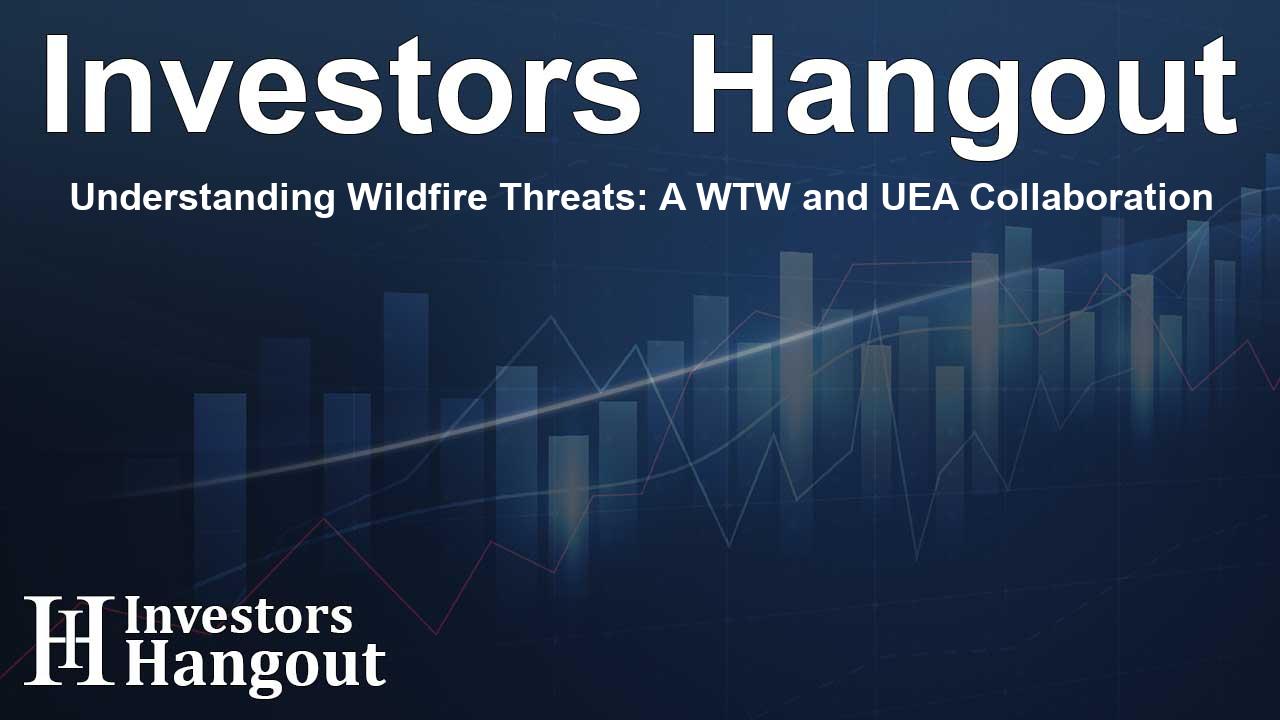Understanding Wildfire Threats: A WTW and UEA Collaboration

Understanding the Growing Wildfire Threat
In light of recent environmental changes, it has become clear that wildfires are escalating into a significant global threat. Willis, a WTW business, recognized this challenge and has partnered with the University of East Anglia (UEA) to enhance our understanding of wildfire risks. As these events increasingly rival losses caused by hurricanes and other natural disasters, this collaboration seeks to provide valuable scientific insights to insurers and reinsurers adapting to this evolving landscape.
The Changing Nature of Wildfires
Wildfires are no longer just seasonal events; they have become larger and more destructive, with their unpredictability increasing. The effects of climate change are pushing fire-prone areas into new territories, creating a higher likelihood of catastrophic losses. This shift is underscored by notable incidents, such as the Black Summer bushfires in Australia, which brought more than US$1.5 billion in insured losses, and the Palisades and Eaton fires that resulted in US$40 billion in damage. These examples illustrate that wildfires are an urgent concern, far beyond being a niche peril.
Collaboration Aims and Objectives
This partnership is designed to inform the insurance sector about the evolving nature of wildfire risk, including shifts in fire frequency, intensity, geography, and the emerging threat of urban fires. The collaboration combines the expertise of Willis in catastrophe risk with the groundbreaking climate and fire science of Dr. Matthew Jones at UEA. Together, this effort strives to enable clients to better anticipate wildfire-related losses and craft informed risk management strategies.
Insights from Leading Experts
Dr. Matthew Jones is integral to the project, co-leading the State of Wildfires Report, which brings together fire scientists from over 60 institutions worldwide to assess extreme wildfire events. This report not only identifies the underlying causes of these activities but also evaluates future risks under climate change scenarios. It aims to offer practical solutions for minimizing risks through informed climate action and community-focused land management practices.
Dr. Daniel Bannister, who leads the Weather & Climate Risks Research at Willis, stresses the urgent need for comprehensive insights into wildfire risks. He emphasizes that insurers face an increasing toll on human life and economic stability from rampant wildfires. By working closely with UEA, the partnership aims to transform intricate research findings into actionable insights for clients navigating this landscape.
The Wider Impact of This Partnership
This partnership signifies a pivotal step in bridging the gap between scientific research and societal needs. Dr. Jones highlighted the significance of advancing research methods to strengthen prediction systems and refine forest management and fire prevention strategies. Such efforts are essential for communities to prepare for and resilience against wildfires. Collaboration between WTW and UEA ultimately aims to equip society with the tools needed to addresses these growing wildfires threats.
About WTW
WTW operates with a commitment to delivering data-driven, insight-led solutions across people, risk, and capital dimensions. With a robust network spanning 140 countries, the company collaborates with organizations to enhance strategies that boost resilience and performance. WTW's mission is to deliver insights that empower clients in adopting sustainable practices for long-term success.
About the University of East Anglia
Recognized among the top universities in the UK for its exceptional research and student experience, the University of East Anglia (UEA) stands out in multiple dimensions. It focuses on impactful research related to sustainable development and showcases its commitment to environmental standards through its award-winning campus. UEA plays a pivotal role within the Norwich Research Park, a key area of innovation in health, environmental science, and plant science research.
Frequently Asked Questions
What is the purpose of the WTW and UEA collaboration?
The collaboration aims to enhance understanding of wildfire risks and provide insightful data to help insurers and reinsurers navigate this evolving challenge.
How do wildfires impact the insurance industry?
Wildfires have led to substantial insured losses, prompting the insurance industry to adjust strategies related to risk management and client support.
Who is Dr. Matthew Jones?
Dr. Matthew Jones is a leading climate researcher at UEA, co-leading the State of Wildfires Report, which analyzes wildfire risks and trends.
What can be done to mitigate wildfire threats?
Improving prediction systems, effective land management, and community preparedness strategies are essential approaches to mitigating wildfire threats.
Why is climate change a factor in wildfire intensity?
Climate change is driving shifts in weather patterns, leading to more extreme heat and drought conditions that contribute to increased wildfire frequency and intensity.
About The Author
Contact Dominic Sanders privately here. Or send an email with ATTN: Dominic Sanders as the subject to contact@investorshangout.com.
About Investors Hangout
Investors Hangout is a leading online stock forum for financial discussion and learning, offering a wide range of free tools and resources. It draws in traders of all levels, who exchange market knowledge, investigate trading tactics, and keep an eye on industry developments in real time. Featuring financial articles, stock message boards, quotes, charts, company profiles, and live news updates. Through cooperative learning and a wealth of informational resources, it helps users from novices creating their first portfolios to experts honing their techniques. Join Investors Hangout today: https://investorshangout.com/
The content of this article is based on factual, publicly available information and does not represent legal, financial, or investment advice. Investors Hangout does not offer financial advice, and the author is not a licensed financial advisor. Consult a qualified advisor before making any financial or investment decisions based on this article. This article should not be considered advice to purchase, sell, or hold any securities or other investments. If any of the material provided here is inaccurate, please contact us for corrections.
